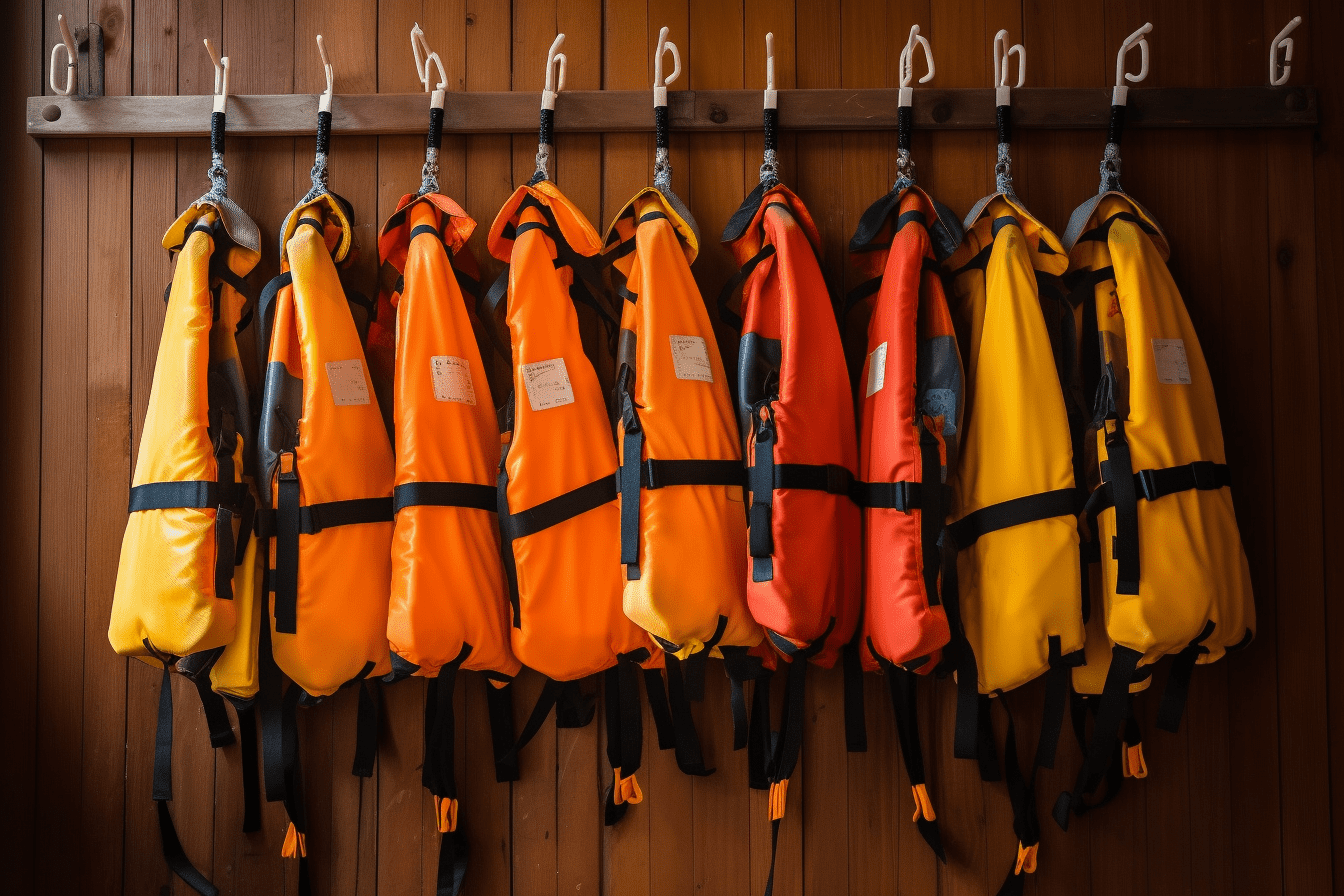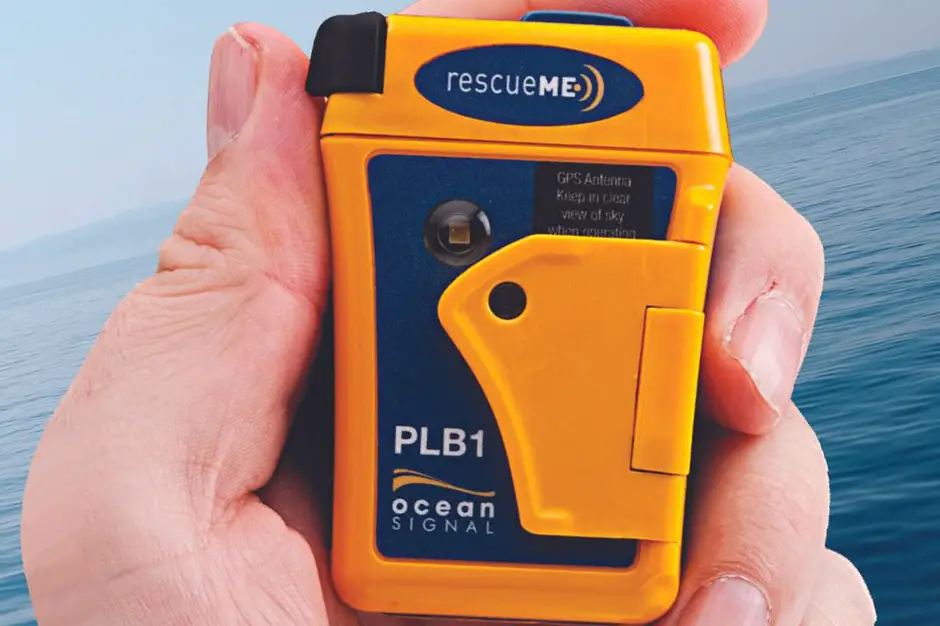When you’re out on the water, soaking in the sun and feeling that cool breeze brush against your face, there’s an undeniable sense of freedom. It’s moments like these when we crave adventure and exploration; but let’s not forget about our safety too! After all, what good is a thrilling escapade if it ends up putting us in harm’s way?
That’s where lifejackets come into play – they’re essential for any aquatic outing. Now, here comes the big question: inflatable or foam lifejacket – which one should you choose?
Well, lucky for you, this article will delve deep into both options to help make your decision easier. Get ready to be armed with knowledge as we compare their pros and cons so that you can continue pursuing those exhilarating experiences while also keeping safe. Remember folks, nothing screams ‘freedom’ more than being able to enjoy yourself without fear of danger lurking beneath the waves!
Understanding The Key Differences
What’s the best choice when it comes to lifejackets? The answer often depends on your personal preferences, intended use, and desired level of comfort. Inflatable and foam lifejackets are two common types that offer different benefits and drawbacks. Understanding the key differences between these options can help you make an informed decision for your next aquatic adventure.
One significant difference between inflatable and foam lifejackets lies in their inflation methods. Inflatable lifejackets typically utilize CO2 cartridges that instantly inflate upon immersion in water or by manually pulling a cord. Some models even offer automatic inflation as soon as they come into contact with water – perfect for those unexpected moments when you need buoyancy quickly.
On the other hand, foam lifejackets do not require any additional steps to provide flotation; they consist of inherently buoyant materials like closed-cell foam that keep you afloat without needing air chambers or cartridges.
Another essential factor to consider is the varying buoyancy levels offered by each type of lifejacket. Foam jackets tend to provide consistent buoyancy regardless of external conditions such as temperature or punctures since their material properties remain stable. However, this also means that they will be bulkier and less comfortable than inflatable counterparts which contour more closely to the wearer’s body shape when inflated.
So while both styles promise safety on the waters, identifying what matters most – whether it’s convenience or customization – will ultimately guide your selection process towards a suitable option tailored just for you.
Pros And Cons Of Inflatable Lifejackets
Let’s discuss the pros and cons of inflatable lifejackets.
On the plus side, inflatable lifejackets are lightweight and easy to wear, making them ideal for activities like fishing and sailing.
On the downside, they must be inflated automatically if fitted or manually and can be punctured.
Pros Of Inflatable Lifejackets
Let’s face it; when it comes to lifejackets, comfort is key. That’s where inflatable lifejackets have a clear advantage over their foam counterparts.
Inflatable Advantages include being lightweight and less bulky than traditional foam jackets, allowing wearers more freedom of movement while they’re out on the water.
Imagine yourself in an engaging adventure, exploring uncharted waters or simply enjoying a day at the beach with your friends – wouldn’t you want as much flexibility and ease as possible? With an inflatable lifejacket, you’ll barely notice you’re wearing one due to its slim design and comfortable fit.
The Comfort Comparison between inflatables and foam jackets is quite significant, making inflatable options perfect for those who value their personal freedom and crave that feeling of unrestricted exploration.
So go ahead – dive into new experiences without any limitations holding you back!
Cons Of Inflatable Lifejackets
But wait, let’s not get carried away just yet! Inflatable lifejackets aren’t without their drawbacks.
For starters, there’s always the risk of inflation malfunctions – a scary thought when you’re relying on this essential piece of safety gear to keep you afloat. Imagine reaching out for that sense of freedom, only to find your trusty inflatable lifejacket isn’t inflating as it should – yikes. But all of the inflatable lifejacket on the market also have a backup oral tube for inflation if needed.
Deflation risks are another concern with inflatable jackets, especially if they become punctured or damaged. While we’d all love to think our adventures will be smooth sailing, accidents can happen and it’s crucial to have reliable equipment during those unexpected moments.
Unfortunately, unlike foam jackets which provide consistent buoyancy no matter what, an inflatable jacket could leave you in a precarious situation if something goes awry.
So while inflatable lifejackets offer undeniable comfort and flexibility benefits, it’s important to weigh these against the potential cons before making your choice. After all, striking the perfect balance between personal freedom and safety is key to truly embracing and enjoying every adventure that comes your way. It is important to regularly conduct safety inspection of your lifejacket as recommended by the manufacturer.
Pros And Cons Of Foam Lifejackets
Now that we have explored the world of inflatable lifejackets, let’s dive into their foam counterparts. Foam lifejackets come with their own unique set of pros and cons. As you weigh your options and consider which type is best for your adventures on the water, it’s essential to understand what a foam lifejacket has to offer.
Foam lifejackets bring several advantages to the table:
- Consistent buoyancy: Unlike inflatables, foam lifejackets maintain constant buoyancy without requiring any action from the wearer.
- Low maintenance: With no need for inflation mechanisms or regular inspections, these jackets are easy to care for and store when not in use.
- Adjustable straps: Most foam lifejackets feature adjustable straps that allow wearers to customize their fit for optimal comfort and security.
- Affordability: Compared to many inflatable models, foam lifejackets generally come at a lower price point while still offering reliable performance.
However, there are also some potential drawbacks worth considering when selecting a foam life jacket. These jackets can be bulkier than their inflatable cousins, making them less comfortable during extended periods of wear – an important factor if freedom of movement is high on your list of priorities. Additionally, they can absorb water over time which will negatively impact their flotation capabilities; though modern materials reduce this issue significantly compared to older models.
As you ponder whether a foam lifejacket is right for you, remember that both types provide safety on the water but cater to different preferences and needs. If consistent buoyancy without the fuss of manual inflation appeals to you and budget constraints play a role in your decision-making process, then donning a foam jacket might make more sense as you embark upon new aquatic escapades.
Ultimately, finding balance between personal comfort and safety requirements is key in choosing the ideal gear for those endless days spent exploring vast blue horizons.
Factors To Consider When Choosing A Lifejacket
When it comes to choosing a lifejacket, comfort is a major factor to consider.
Inflatable lifejackets tend to be more comfortable than foam ones, but usually come with a higher cost.
On the other hand, foam lifejackets are usually more affordable, but may not be as comfortable.
Ultimately, it’s up to the individual to decide which factor is more important.
Comfort
We all want to feel comfortable and free when we’re out on the water, don’t we? That’s why it’s essential to choose a lifejacket that offers not only safety but also optimal comfort. After all, you’ll be wearing it for extended periods of time while doing activities like swimming, fishing or just lounging in the sun.
When comparing inflatable and foam lifejackets, there are some noticeable differences in terms of comfort. Inflatable lifejackets tend to provide more freedom of movement since they’re less bulky than their foam counterparts. They can be easily adjusted for an ideal fit with adjustable straps which makes them suitable for different body types.
On the other hand, foam lifejackets offer inherent buoyancy without any need for inflation; however, this means they can be bulkier and may restrict your movements during certain activities.
Ultimately, choosing between an inflatable or foam lifejacket comes down to personal preference based on what feels most comfortable for you. Adjustable fit options can help ensure that either type will work well with your specific needs and allow you to enjoy your time on the water without feeling restrained or uncomfortable.
Cost
Another essential aspect to consider when choosing a lifejacket is the cost because we all want a safe and comfortable option without breaking the bank.
The affordability comparison between inflatable and foam lifejackets can be quite significant, so it’s important to keep your budget in mind while making this decision.
Inflatable life jackets tend to be more expensive than their foam counterparts due to their advanced technology and compact design. However, they offer an unbeatable blend of comfort, freedom of movement, and style that may justify the higher price tag for some water enthusiasts.
On the flip side, foam lifejackets provide budget-friendly options with reliable buoyancy and solid protection at a lower cost. They might not be as sleek or unobtrusive as inflatables, but they’ll still ensure you stay safe on the water without putting too much strain on your wallet.
Ultimately, finding the perfect balance between safety features, comfort levels, and affordability will help you enjoy every moment spent out on the water – where true freedom lies waiting.
What are some common myths and misconceptions about lifejackets?
Lifejacket myths debunked: One common misconception is that wearing a lifejacket hinders swimming ability. In reality, modern lifejackets are designed to allow freedom of movement while providing buoyancy. Another myth is that only weak swimmers need lifejackets. However, even strong swimmers can face unforeseen situations, and a lifejacket can provide crucial support. Lastly, some believe that lifejackets are uncomfortable and restrict breathing. This is incorrect, as they are designed for comfort and do not impede breathing if properly fitted.
Tips For Proper Lifejacket Care And Maintenance
Taking care of your lifejacket is essential to ensure its longevity and effectiveness in keeping you safe on the water. Proper care and maintenance can significantly impact the performance of both inflatable and foam lifejackets, giving you peace of mind as you embark on your adventures.
In this section, we’ll explore some useful tips for maintaining your lifejacket, so it’s always ready to help you enjoy that sense of freedom out on the open water.
Lifejacket storage plays a crucial role in preserving its condition. When not in use, store your lifejacket in a cool, dry place away from direct sunlight or extreme temperatures. Avoid placing heavy objects on top of it, which could cause damage to the materials over time. It’s also important to make sure your lifejacket is completely dry before storing it – moisture trapped inside can lead to mildew growth or deterioration of the buoyancy material. For those with inflatable models, remember to remove CO2 cartridges after each use to prevent accidental inflation during storage.
Cleaning methods for lifejackets differ depending on whether they are inflatable or foam-based designs. For foam lifejackets, simply rinse them off with fresh water after each use to remove any salt residue or dirt particles that may have accumulated during your aquatic escapades.
If more thorough cleaning is required, use mild soap and warm water while gently scrubbing the surface with a soft cloth or sponge; then rinse thoroughly and allow it to air-dry fully before storing it away for future voyages. As for inflatable ones, follow manufacturer guidelines.
Remember that taking good care of your trusty flotation companion ensures long-lasting reliability whenever you venture out onto the open waters seeking new horizons!





Leave a Reply